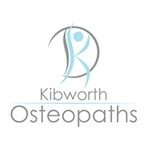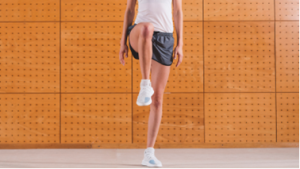Kibworth Osteopaths & Pilates
Osteopaths & Knees

Osteopaths know a lot about knees, and how to keep them functioning for you – at any age.
Knees are interesting joints. They are a load bearing hinge joint and facilitate bending and straightening, with a little rotation too. Knees are often the first area of compensation if a hip, foot or ankle problem occurs.
As well as being busy joints in their own right. Knee injury, dysfunction, or pain can occur at any age.
When we sit, they bend, when we stand, they straighten, when we walk or run, they absorb a lot of force. The list goes on! Good job we have the meniscus in between the bony joint components to help.
Pain in the knees can come from an obvious trauma, or just gradually build up over time. It’s not always age related.
In The Clinic
Some of the most common injuries I see in clinic include:
- Young Children – This is normally to do with sitting in a W position – it places a lot of strain on the knees.
- Teenagers – The main knee issue here is Osgood-Schlatter’s. This is most common in active teenagers. It can be really painful and so stops them playing/competing. Expert guidance is needed to help your superstar.
- Sports / trauma related – Knees are not just bone. We have ligaments, muscles, tendons and meniscus all working hard. These can get injured, causing pain as well as limited function. Osteopaths have lots of techniques to help, plus the use of sports tape and rehabilitation knowledge.
- Elderly – The obvious issue would be arthritis but not all knee pain in the older population is degenerative.
How to Care for your Knees
This list is not exhaustive! If you have knee pain or dysfunction it is important to get specific advice.
General advice includes:
- Whilst we can kneel and sit back on our heels doing this for prolonged periods can lead to pain and injury. Use a kneeling pad and regularly break this activity up.
- Get your footwear right. Use footwear that supports your feet. This ensures your knees are not compensating for any collapsed arches. It means that some of the ground forces are absorbed by the shoes.
- Walk – this helps strengthen the knee alongside the muscles that move and support the knee.

- Mixed exercise – running is popular and it is a great form of exercise. However, if your only exercise is running and you run a lot, your knees are potentially under stress. This is even so if you’re in super trainers. Mixing your exercise – for example going between running and cycling or swimming – can help.
- My biggest tip is, don’t put up with pain. See a professional who can assess your knee and provide a diagnosis. Get some effective hands on help as well tailor made rehabilitation exercises and advice.
For more articles from Kibworth Osteopathy & Pilates, please see:
More Information
For more information on how Osteopathy can help you, please:
- visit www.kibworthosteopaths.co.uk or
- call me on tel:07761664325.
Always happy to help you.
Emily Coombes (B’Ost)
Registered Osteopath (7416)




 St Wistan’s Pilgrimage Walk
St Wistan’s Pilgrimage Walk

